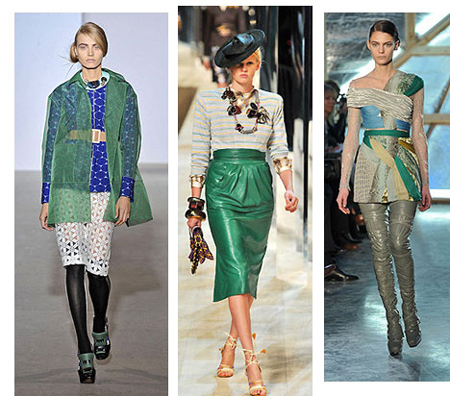
It’s a good question.
After all, fashion has a long, l-o-n-g history of frequently changing, dating back to Louis XIV, who changed men’s jacket styles 68 times in his 72-year reign (the longest in European history, by the way, starting when he became king at age 5).
Then there was Napoleon, who, in an effort to revive the battered French economy after the Revolution, mandated that no one could come to court wearing the same thing twice. It jump-started the country’s finances and re-established France as the world fashion leader.
Finally, Charles Frederick Worth, the “Father of Haute Couture,” established the Chambre Syndicale de la Haute Couture in 1868 to protect his work from knock off artists and to set guidelines for the couture industry. Among them: produce new collections twice a year for spring and fall.
So after nearly 300 of years of “out with the old, in with the new” in fashion — 140 of which by command of the couture industry – how can we possibly “go green,” you might ask?
Actually, it’s easier than you think.
Let’s take a closer look at what “green fashion” means:
1 || Clothes made from natural fabrics like organic cotton and hemp require less manufacturing time and energy than man-made fabrics like nylon and polyester. Less production time = less harmful emissions.
2 || Clothes that can be washed in cold water and lined dried cut down on greenhouse gases as opposed to clothes that are washed in warm water and thrown in the dryer. Green advocates recommend only using a dryer for emergencies.
3 || Wearing a few pieces many ways extends the usefulness of the garment, cutting down on the need for more clothes that are worn less often.
4 || Like locally grown vegetables, buying locally made clothing and accessories helps the local economy and cuts down on emissions produced through transporting goods long-distance.
5 || Clothes made by reputable companies instead of by “sweat shops” show respect for human welfare and quality of life.
6 || Clothes that are recycled by vintage shops and second hand stores cut down on new production.
7 || Recycling old clothes into new styles or unworn jewelry into new pieces cuts down on manufacturing.
As you look over this list, you may discover that you’re already doing some of these things – especially in this economy. Recycling and making a little do a lot are not new ideas, particularly in this column. The goal is to THINK about how you use and wear what you already have instead of automatically buying new. Then, when you do buy new, do so with an eye towards economy and multi-tasking. It’s a great way to save money and enjoy “green fashion.”

One reply on “Green Fashion Basics”
And be sure to look at the big picture. The new front-loading horizontal-drum washing machines not only use less water, they then spin the clothes SO FAST that they come out almost dry!
Then just put those ‘almost dry’ clothes on a stylish clothes drying rack like this one that is set up under a ceiling fan and you will have saved a ton of energy by not using the clothes dryer at all.